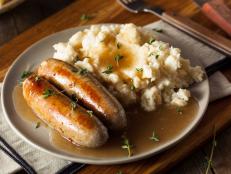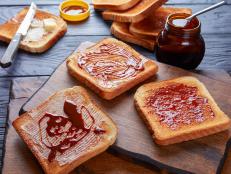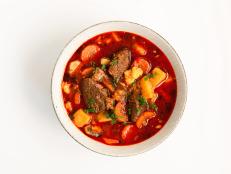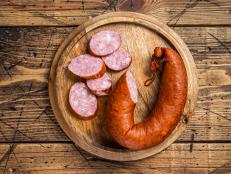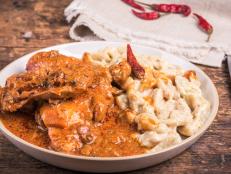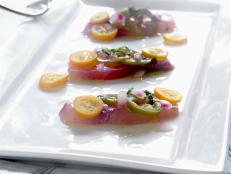What Is Irish Soda Bread?
And why does it have a cross in the center?

lauraag/Getty Images
By Layla Khoury-Hanold for Food Network Kitchen
Layla Khoury-Hanold is a contributor at Food Network.
You might associate Irish soda bread with traditional St. Patrick’s Day fare, but there's a lot more to the story. Here’s how Irish soda bread came to be, how it got its name and the reason it has a cross in the center. Plus, our favorite Irish soda bread recipes.

JoKMedia/Getty Images
What Is Irish Soda Bread?
Irish soda bread is a crumbly, tangy, scone-like quick bread made with flour, baking soda, salt and buttermilk. The acidity of buttermilk interacts with the alkaline properties of baking soda to create the bread’s leavening without the use of yeast.
While Native Americans were the first to leaven bread with baking soda, using pearl ash, a natural form of soda created from the ashes of wood, Irishmen adopted baking soda as leavener in the 1830’s when it was introduced to the U.K. Irish soda bread, typically baked in iron pots or skillets over coals, was economical, given the minimal ingredients and equipment required to make it. Today, Irish soda bread is often made with brown flour in Ireland, contains no sweeteners or mix-ins and is enjoyed sliced at many mealtimes--not just on St. Patrick's Day.
The sweet cakey loaf that many of us enjoy around St. Patrick's might be more accurately described as Irish American soda bread. It's typically sweeter and spangled with raisins or carraway seeds or citrus zest.
Both types of Irish soda bread are delightfully easy to make; they can be made in one bowl and immediately baked.

DebbiSmirnoff/Getty Images
What Is In Soda Bread?
The four main ingredients for soda bread are flour, baking soda, salt and buttermilk. Butter and eggs can also be added to create a richer dough. As with many quick breads, Irish soda bread lends itself to a variety of add-ins to impart additional flavors or textures:
- Traditional: caraway seeds, currants or raisins
- Contemporary: nuts, other dried fruits or citrus zest
- Sweetener: sugar, brown sugar or honey
- Alcohol: Irish whiskey (often used to rehydrate currants) or Guinness

Komorebi/Getty Images
Why Is There a Cross In the Center?
Irish soda bread is scored in the center in an X shape to ensure even heat distribution and consistent baking throughout. Some believe that the cross in the center of Irish soda bread represents the Catholic faith or Gaelic cross, while others believed it has symbolic meaning to let out fairies or ward off evil.
How Long Does Irish Soda Bread Last?
Irish soda bread lasts up to two days but is best consumed the day it is baked. You can store Irish soda bread in the freezer for up to two months. To store Irish soda bread in the freezer, tightly wrap the loaf (or individual slices) in a layer of plastic wrap, then a layer of aluminum foil, before stashing it in a freezer-safe bag or container. Be sure to label it with the contents and date.
Irish Soda Bread Recipes
Ina's Irish soda bread (pictured above) is popular for a reason—it calls for traditional ingredients such as flour, baking soda and buttermilk, but pulls in a teaspoon of grated orange zest to make all the flavors pop.
This recipe yields a straight-up, no frills version of Irish soda bread with an unconventional mix of ingredients including a duo of butter and shortening and both baking soda and baking powder.

Felicia Perretti
At her Boston bakery, Flour, Joanne Chang offers Irish soda bread throughout March to commemorate St. Patrick’s Day and Boston’s Irish heritage. Her rich take calls for mixing butter into the dough to create a delectable crumb and a flavorful mix of 100 percent rye flour, caraway seeds, currants and more butter.
This currant-studded loaf gets an added boost of sweetness thanks to a tablespoon of sugar in the dough and a tablespoon of sanding sugar that’s sprinkled on top just before baking.
Think of this recipe as a fruit cake meets Irish soda bread. Instead of caraway seeds and currants, it pulls in equal parts dried figs, dried cranberries and toasted walnuts, plus a half teaspoon of warming allspice.
Related Links:























